Egypt plane crash: Authorities reject claim Isis brought down Metrojet flight 9268
Though investigators have refused to rule out any potential cause of the crash, from technical problems to human error
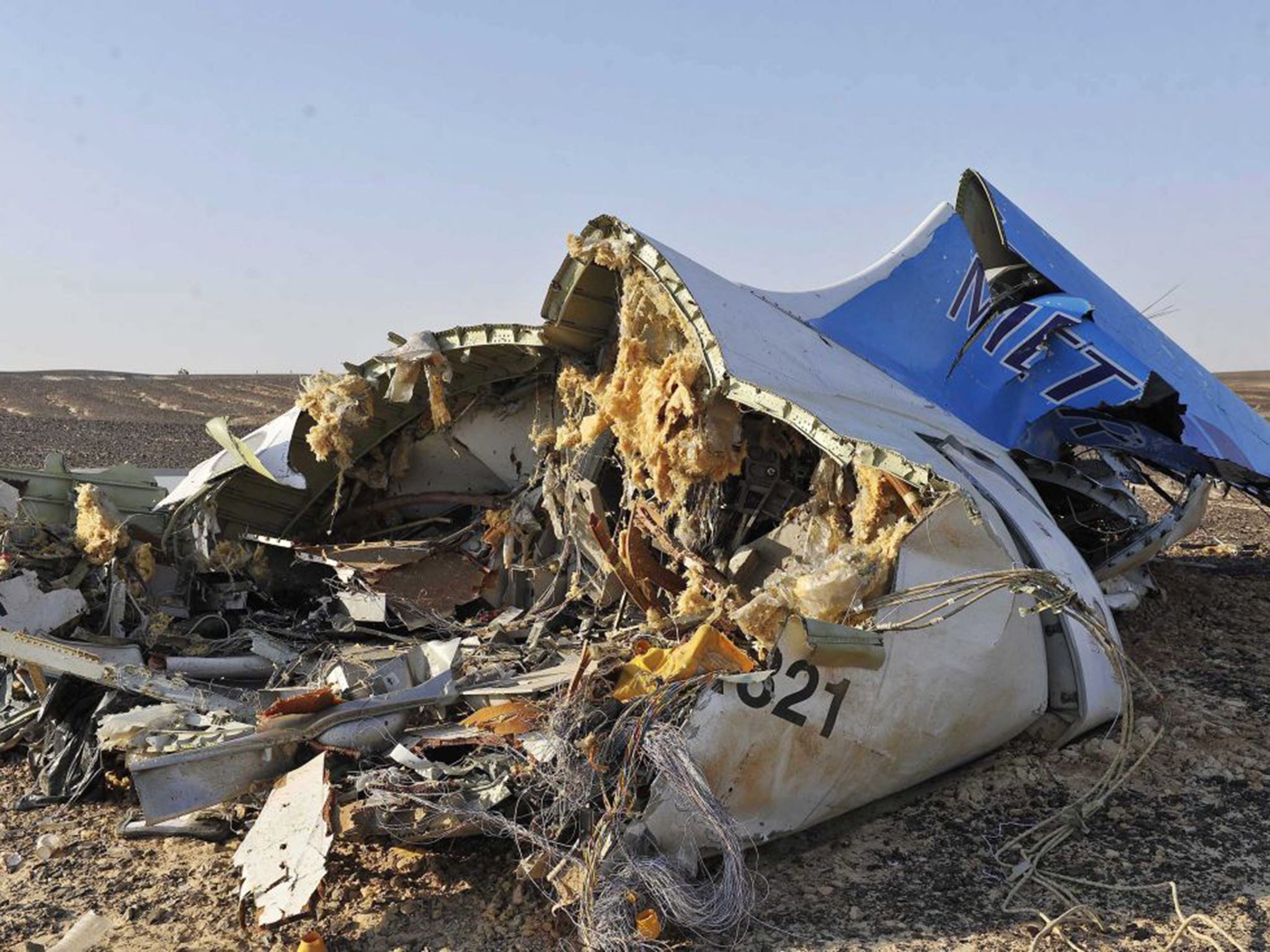
Egyptian and Russian investigators are working to piece together the cause of the crash of a Russian airliner in the Sinai peninsula with 224 people on board.
Flight 7K9268 had left Egypt’s Sharm el Sheikh airport early on 31 October heading for St Petersburg, with 217 passengers, including 17 children, and seven crew before losing contact with flight controllers less than 30 minutes into the trip. The Russian President, Vladimir Putin, has called today a day of national mourning; it is thought nearly impossible that survivors will be found. The vast majority of those on board were Russian nationals.
Investigators have refused to rule out any potential cause of the crash, from technical problems to human error .
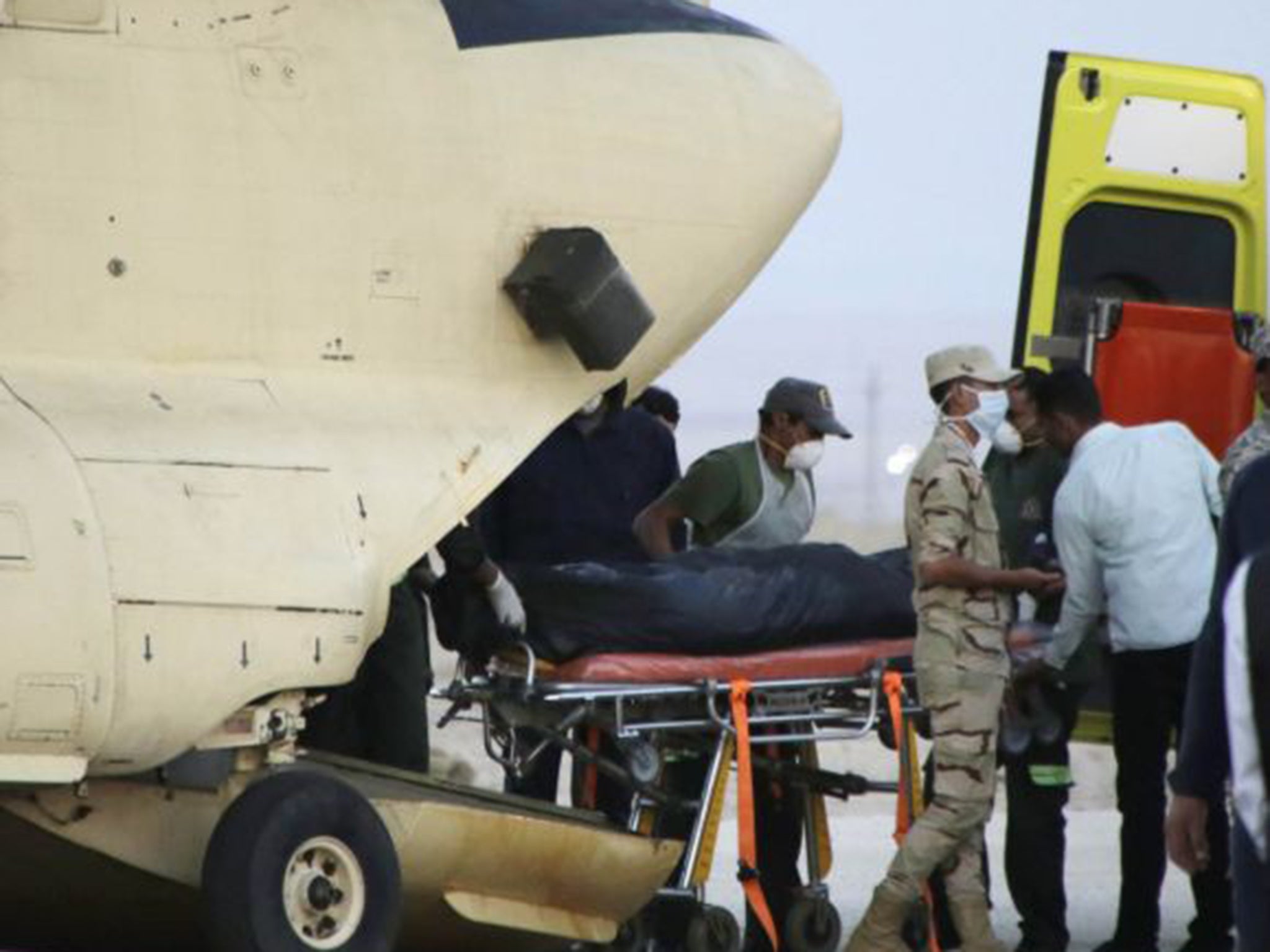
A claim by an affiliate of Islamic State (Isis) that it had “brought it down” complicates matters further. Officials and experts were quick to pour scorn on the claim by the Province of Sinai group. But even if the claim is proved false, it leaves a headache for Mr Putin over Russia’s involvement in Syria’s civil war – a bombing campaign that began at the end of September – which is intended to confront the threat of Isis.
Egyptian officials travelled to the wreckage of the Airbus A321 in the Sinai peninsula, while the families of some of the 214 Russian nationals (three passengers were said to be Ukrainian) gathered at St Petersburg’s Pulkovo airport, awaiting news of their loved ones.
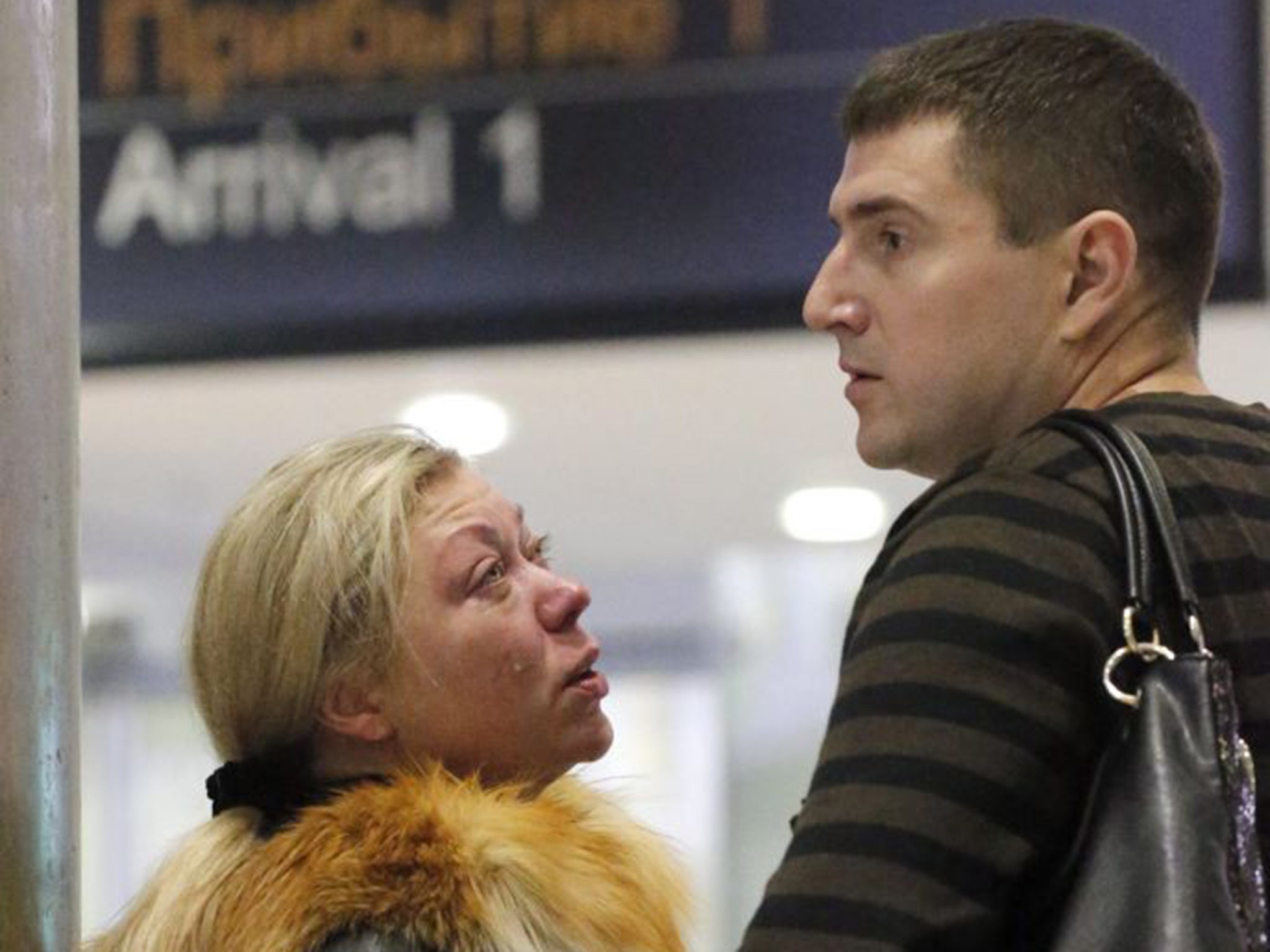
The Metrojet plane took flight at just before 6am Egypt time (4am GMT). According to data from the site FlightRadar, the plane began dropping at a rate of 6,000ft per minute before losing touch with air traffic control about 6.13am. A statement from the aircraft manufacturer Airbus indicates that the plane crashed about four minutes later, in the mountainous region of the peninsula, with early reports suggesting that the pilot Valery Nemov wanted to land in a nearby airfield following an emergency.
Egypt’s Prime Minister, Sherif Ismail, along with the tourism minister, Hisham Zaazou, and the health minister, Ahmed Emad Al Din Rady, visited the site of the crash. A statement from the Egyptian cabinet said it was “premature to decide the reasons for the crash”.
Egyptian authorities had hoped to find survivors in the wreckage, sending dozens of ambulances to the crash site.
As evening fell at the capital’s Zeinhom morgue, a grim parade of ambulances began ferrying the dead – more than 100 bodies, including at least five children, said to have been found at the crash site by late on 31 October.
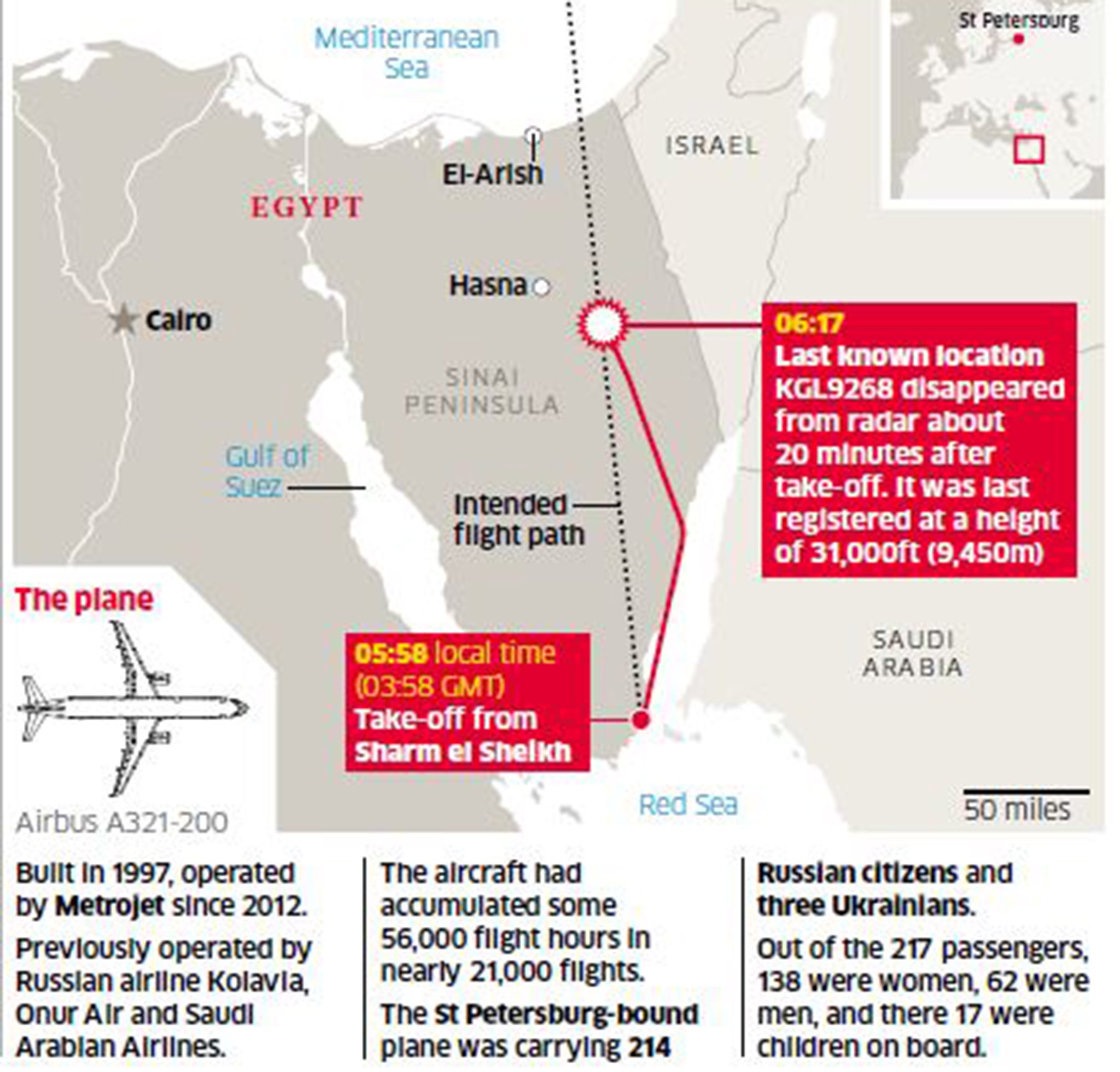
“I now see a tragic scene,” an Egyptian security officer at the site told Reuters. “A lot of dead on the ground and many who died while strapped to their seats. The plane split into two, a small part on the tail end that burned and a larger part that crashed into a rockface.”
Province of Sinai released an online statement late in the afternoon claiming responsibility for the attack. The group, formerly known as Ansar Beit al-Maqdis, has been active in Sinai since the Egyptian uprising of January 2011, increasing its attacks since the overthrow of former Islamist president Mohamed Morsi in June 2013.
The Amaq news website, which publishes information from Isis sources, called the attack “an answer” for Russia’s air strikes in Syria, which Russia says is intended to combat Isis control of a large swathe of territory.
The Isis claim was met with scepticism by aviation and security experts alike. “From what I have read, this seems to have happened not long after aircraft got to the top of its ascent [to cruising altitude],” said Captain Paul Wilson, a retired pilot and aviation expert. “It’s reported that the pilot had asked to land at the nearest airport, and the high rate of descent shows he was intent on doing just that. The sorts of weapons these terrorists have would not be able to intercept aircraft at cruising altitude.” Mr Wilson was adamant that flight data indicated that the pilot was attempting a controlled descent. “Descending at that rate doesn’t mean the aircraft was out of control,” he said.
Zack Gold, visiting fellow at the Institute for National Security Studies, was equally sceptical of Isis’s claim, pointing to the group’s statement that it had “downed” the aircraft, and not shot it down.
He told The IoS: “Wilayat Sinai [another name for Ansar Beit al-Maqdis] possess Manpads [air-defence systems], and has used them against Egyptian military aircraft.
“Aircraft are most exposed to anti-aircraft missiles during take-off and landing because the maximum Manpads range is around 15,000ft. The Russian plane lost contact at more than double that altitude.” The plane was thought to be cruising at 31,000ft.
Egyptian and Russian authorities rejected the Isis claim. Mr Ismail told the news conference that there did not appear to be any unusual activity behind the crash. Both the plane’s black boxes had been found, Mohamed Hossam Kamal, the civil aviation minister, said, adding that communications between the plane and air traffic control before the crash had been normal.
In Russia, investigators said they were checking fuel samples from the last refuelling stop, in the Russian city of Samara, and have focused on the possibility that a technical failure could have caused the 18-year-old plane to crash. A spokesman said investigators were questioning people who were involved in preparing the aircraft and its crew, and were carrying out searches at Moscow’s Domodedovo airport.
Russian news agency Ria Novosti quoted a source at Sharm el Sheikh airport as saying that the crew of the A321 appealed to the airport’s technicians due to “engine start failures several times over the past week”.
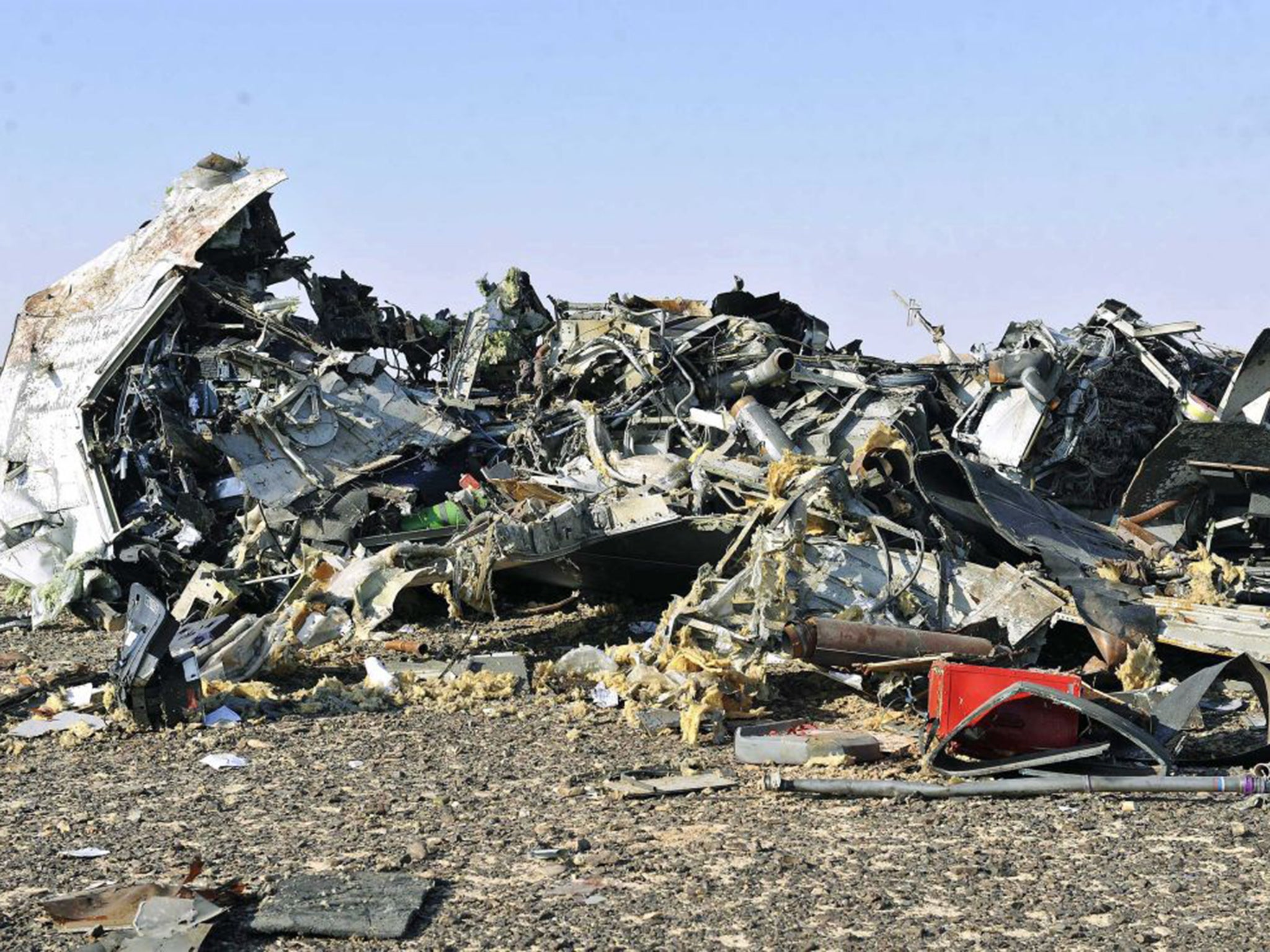
In St Petersburg, friends and relatives of the victims were being housed for the night at a hotel near the airport.
Yulia Zaitseva said her friends, newly-wed couple Elena Rodina and Alexander Krotov, were on the flight. Ms Zaitseva said Ms Rodina “really wanted to go to Egypt”.
Additional reporting by Henry Austin
Facts and figures
What happened to the plane?
No conclusions can be drawn until further investigations take place. Egyptian investigators have found both black boxes, one for cockpit voice recordings and one on for flight data, the Egyptian Civil Aviation Minister said. These will allow investigators to determine what happened in the plane’s last moments. An official from the Egyptian Aviation Incidents Committee said the pilot had radioed to report technical difficulties and was planning an emergency landing at the nearest airport before losing contact with air traffic controllers. Kogalymavia, the company that owns Metrojet, said the plane had been fully serviced, appearing to suggest that any technical difficulties, if there were any, were not visible on the ground.
Did the plane’s age play a factor?
Manufactured in 1997, the plane had accumulated 56,000 flight hours during nearly 21,000 journeys before the crash. It had been operated by Metrojet since 2012. Oksana Golovin, a spokeswoman for Kogalymavia, said the plane was in “full working order” and being operated by an extremely experienced crew. She told a press conference that the pilot had 12,000 hours of flying experience.
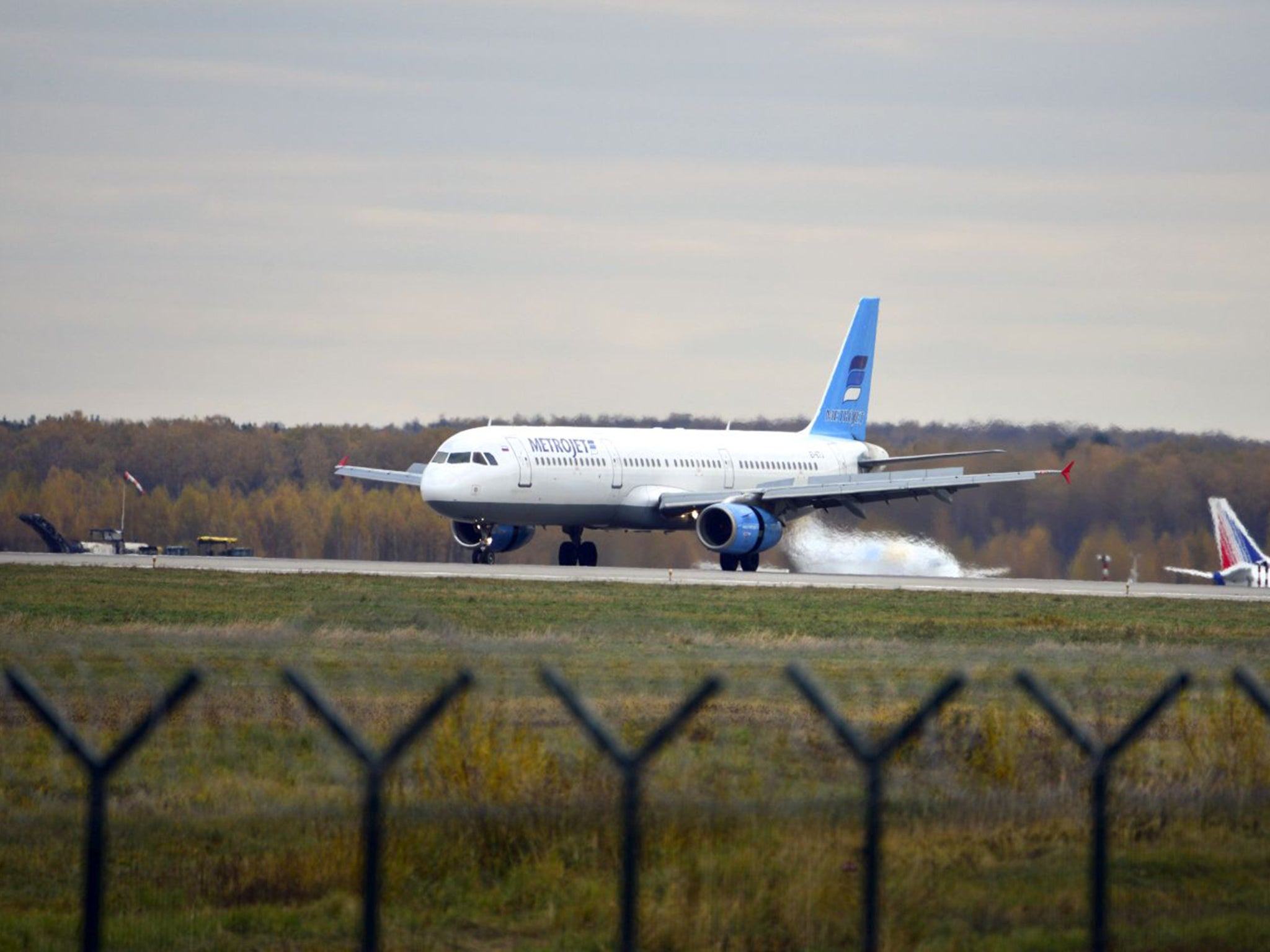
Was the plane shot down?
While a so-called Islamic State affiliate appeared to take responsibility for bringing it down, no evidence was offered to back this up, and the group is not known to have the weapons capability to do so at the height the plane was apparently cruising. The Russian transport minister, Maksim Sokolov, told Interfax news agency that “such reports cannot be considered true”.
What are the repercussions?
Other passenger flights have already been affected by the crash. Germany’s Lufthansa airline said it will no longer fly across the area “as long as the cause of [the] crash has not been clarified”. And Air France has said it will also avoid the area pending the outcome of the investigation “as a precaution, until further notice”.
Chris Stevenson
Join our commenting forum
Join thought-provoking conversations, follow other Independent readers and see their replies
Comments